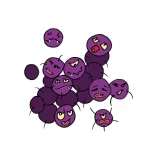
This post contains almost all the topics of Pathology along with their most important and frequently asked questions from different Indian university examinations.
This post is prepared for the benefit of pathology students who are going to appear in the university examinations.
The Paper 1 and Paper 2 divisions are prepared on the basis of syllabus of B.H.M.S. (Degree course) applicable from the academic session 2015-2016, as per the guidelines of Central council of homoeopathy.
Read
All the questions are given under their related chapters.
- FQ: Full Question
- SFQ: Semi Full Question
- SN: Short Note
Number of papers – 02
Marks: Paper 1-100 marks; Paper 2-100 marks.
Paper-1
- Section A: General Pathology – 50 marks
- Section B: Systemic Pathology – 50 marks
Paper- 2
- Section A:
Bacteriology – 25 marks
Fungi and Parasites – 25 marks
- Section B:
Virology – 20 marks
Clinical Microbiology and Diagnostic procedures – 10 marks
Microbiological control and mechanism of pathogenicity – 10 marks
General Topics and Immuno-pathology – 10 marks.
This post contains only the topics of paper 1 (pathology). Topics of paper 2 are given in a separate post MICROBIOLOGY FREQUENTLY ASKED QUESTIONS.
Read the whole Exam pattern of BHMS.
Table of Contents
ToggleGENERAL PATHOLOGY
1. CELL INJURY AND ADAPTATION
- FQ: Cell death.
- FQ: Cell injury- etiology, pathogenesis, morphology, and mechanism of cell injury.
- FQ: Define necrosis- describe Coagulation necrosis in detail.
- FQ: Gangrene: etiology, pathogenesis and types.
- FQ: Types of cell injury, describe reversible and irreversible cell injury in detail.
- SFQ: Mechanism of cell injury.
- SN: Apoptosis.
- SN: Atrophy.
- SN: Cloudy swelling/ Hydrophic changes of cell injury.
- SN: Diabetic foot.
- SN: Fatty liver.
- SN: Hypertrophy and Hyperplasia.
- SN: Metaplasia
- SN: Pathological calcification/ Metastatic calcification.
2. INFLAMMATION, HEALING AND REPAIR
- FQ: Define chronic inflammation. Write down granulomatous inflammation in detail.
- FQ: What is Inflammation? Write down the cellular events of acute inflammation.
- SFQ: Wound repair- write down the mechanism of healing and factors influencing it.
- SN: Phagocytosis.
- SN: Healing by primary intension.
- SN: Chemical mediators of inflammation.
- SN: Chronic granulomatous inflammation.
- SN: Ghon complex.
3. AMYLOIDOSIS
- FQ: What is amyloidosis? Write down the staining characteristics of amyloids.
- SN: Amyloid changes in kidney.
- SN: Staining characteristics of amyloid.
4. HAEMODYNAMIC DISEASES
THROMBOSIS
- FQ: What is thrombosis? Write down Virchow’s triad in detail.
- SN: Complications of thrombosis.
- SN: Morphology of thrombi.
- SN: Endothelial injury in thrombosis.
- SN: Factors predisposing thrombosis.
- SN: Fate of thrombosis.
EMBOLISM
- SN: Air embolism.
- SN: Decompression sickness.
HAEMORRHAGE
SN: Classification of haemorrhage.
OEDEMA AND ISCHEMIA
- FQ: Oedema-write down difference between cardiac and renal oedema.
- FQ: What is oedema? Describe clinical classification of oedema.
- SN: Define ischemia, it’s effects and etiology in detail.
- SN: Difference: Transudate and Exudate.
- SN: Non-inflammatory causes of oedema.
- SN: Pulmonary oedema.
- SN: Starling’s law.
INFARCTION
FQ: Define infarction, what are the factors affecting it, what are the types of infarction? Write down morphology and pathology of it.
SHOCK
- FQ: Define shock. What are the causes and types of shock? Write down the clinical features of shock.
- SN: Etiopathogenesis of shock.
- SN: Irreversible shock.
- SN: Stages of shock (pathophysiology).
5. NEOPLASM
- FQ: Describe neoplasm in detail. Explain spread of malignant tumour.
- FQ: Describe neoplasm with difference between benign and malignant tumour.
- SN: Grading and staging of neoplasm
- SN: Metastasis- spread, grading and stages.
- SN: Miasmatic evaluation of malignant tumour.
- SN: Tumour markers.
- SN: Various routes of administration of malignant tumour.
6. ENVIRONMENTAL AND NUTRITIONAL DISEASES
- SN: Effects of radiation
- SN: Hypothermia
- SN: Korsakoff’s syndrome
- SN: Mountain sickness and sea sickness
- SN: Obesity
- SN: Osteomalacia
- SN: Protein energy malnutrition
- SN: Rickets
- SN: Starvation
- SN: Vitamin B1 deficiency/ Beriberi
- SN: Vitamin B12 deficiency
- SN: Wernicke’s encephalopathy
7. GENETIC DISORDERS
- FQ: Describe chromosomal abnormalities in detail.
- FQ: Describe genetic disorders in detail.
- FQ: Disorders affecting sex chromosomes.
- SN: Difference between autosomal recessive and autosomal dominant disorders.
- SN: Down’s syndrome
- SN: Klinefelter’s syndrome
- SN: Monogenetic disorders
- SN: Turner’s syndrome
8. HOMOEOPATHY AND PATHOLOGY
- FQ: Define Miasm, it’s concept and pathological concern with example.
- FQ: Rheumatic heart disease and it’s Miasmatic evaluation
- FQ: What is neoplasia? What are the homoeopathic Miasmatic interpretation of neoplasm?
- SN: Bronchial asthma and its Miasmatic evaluation
- SN: Hypertension and it’s Miasmatic evaluation
- SN: Importance of pathology in homoeopathy.
- SN: Miasm and pathology
- SN: Miasmatic evaluation of diabetes mellitus.
- SN: Ulcerative colitis and it’s Miasmatic evaluation.
SYSTEMIC PATHOLOGY
1. HAEMATOLOGY
- FQ: Anaemia- types, classification and laboratory investigations. With megaloblastic anaemia in detail.
- FQ: Bone marrow examination, identification, methods, and significance in detail.
- SN: Blood indices.
- SN: E.S.R.
- SN: Eosinophilia.
- SN: Iron deficiency anaemia.
- SN: Peripheral blood smear examination.
- SN: Pernicious anaemia.
- SN: Purpura
2. DISORDERS OF PLATELETS AND BLEEDING DISORDERS
- SN: ABO system.
- SN: Blood transfusion reactions.
- SN: BT and CT.
- SN: Classical haemophilia.
- SN: Haemolytic disease of new born/ Erythroblastosis foetalis.
3. DISORDERS OF LYMPHOCYTES AND LYMPHORETICULAR TISSUES
- SN: Acute leukaemia.
- SN: Chronic leukaemia.
- SN: Leukemoid reactions.
- SN: Lymphocytosis.
4. THE BLOOD VESSELS AND LYMPHATICS
- FQ: Define atherosclerosis, describe its morphology, etiology and pathogenesis in detail.
- SN: Aneurysms.
- SN: Hyperlipidaemia.
- SN: Raynaud’s disease and Raynaud’s phenomenon.
- SN: Takayasu’s arteritis.
- SN: Temporal (Giant cell) arteritis.
5. THE HEART
- FQ: Bacterial endocarditis.
- FQ: Myocardial infarction- morphology of transmural myocardial infarction.
- FQ: Rheumatic heart disease.
- SN: Acute pericarditis.
- SN: Angina pectoris.
- SN: Aschoff body.
- SN: Brown atrophy of heart
- SN: Hypertension.
- SN: Mitral stenosis.
- SN: Rheumatic fever.
- SN: Risk ratio of heart disease.
- SN: Serum enzyme in myocardial infarction.
6. RESPIRATORY SYSTEM
- SN: Bronchial asthma.
- SN: Bronchiectasis.
- SN: Brown induration of lung.
- SN: Chronic bronchitis.
- SN: Difference between extrinsic and intrinsic asthma.
- SN: Difference between primary and secondary tuberculosis.
- SN: Lobar pneumonia.
- SN: Primary tuberculosis.
7. GASTROINTESTINAL TRACT
- FQ: Carcinoma of stomach.
- FQ: IBD (Irritable bowel disease) with types of ulcerative colitis.
- FQ: Inflammatory bowel disease in detail.
- FQ: Peptic ulcer.
- FQ: Ulcerative colitis with Miasmatic evaluation.
- FQ: Ulcers-various types with their healing methods.
- SN: Ascites.
- SN: Dental caries.
- SN: Difference between Gastric and Duodenal ulcers.
- SN: Difference between Ulcerative colitis and Crohn’s disease.
- SN: Enteric fever
- SN: Gastrointestinal polyps.
8. LIVER
- FQ: Cirrhosis of liver.
- FQ: Hepatitis B virus.
- FQ: Jaundice with causes in detail.
- SN: Amoebic liver abscess/ Hepatic amoebiasis.
- SN: Bile pigments.
- SN: Hydatid cysts.
- SN: Liver function tests.
- SN: Nutmeg liver.
- SN: Van Den Bergh Reaction.
- SN: Viral hepatitis.
9. EXCRETORY SYSTEM
- FQ: Acute glomerulonephritis.
- FQ: Acute renal failure.
- FQ: Chronic renal failure.
- SN: Diabetes mellitus.
- SN: Glucose tolerance test.
- SN: Proteinuria.
- SN: Renal cell carcinoma
- SN: Renal function tests.
- SN: Renal threshold.
- SN: Wilm’s tumour.
10. ENDOCRINOLOGICAL DISORDERS
- FQ: Pathogenesis of type 1 and type 2 diabetes mellitus.
- SN: Complications of diabetes mellitus.
- SN: Goitre.
11. MALE AND FEMALE REPRODUCTIVE SYSTEM
- SN: Teratoma of ovary.
- SN: Toxic shock syndrome.
- SN: Infertility.
- SN: Breast inflammation and tumour.
- SN: Gynaecomastia (Hypertrophy of male breast).
12. MUSCULO SKELETAL SYSTEM
- SN: Rheumatoid arthritis.
- SN: Gout.
13. SOFT- TISSUE TUMOURS
- FQ: Tumours of adipose tissue
- SN: Fibromatosis
- SN: Fibrosarcoma
- SN: Lipoma
- SN: Synovial sarcoma
14. CENTRAL NERVOUS SYSTEM
- FQ: Ischaemic brain damage
- SN: Alzheimer’s disease
- SN: Cerebral infarction
- SN: Germ cell tumours
- SN: Hydrocephalus
- SN: Meningitis
- SN: Parkinsonism
- SN: Wallerian degeneration
Hope you find this post helpful. Don’t forget to share with your friends.
You can also find useful content of other subjects of second B.H.M.S. by just following the below mentioned links,













Thanks for content